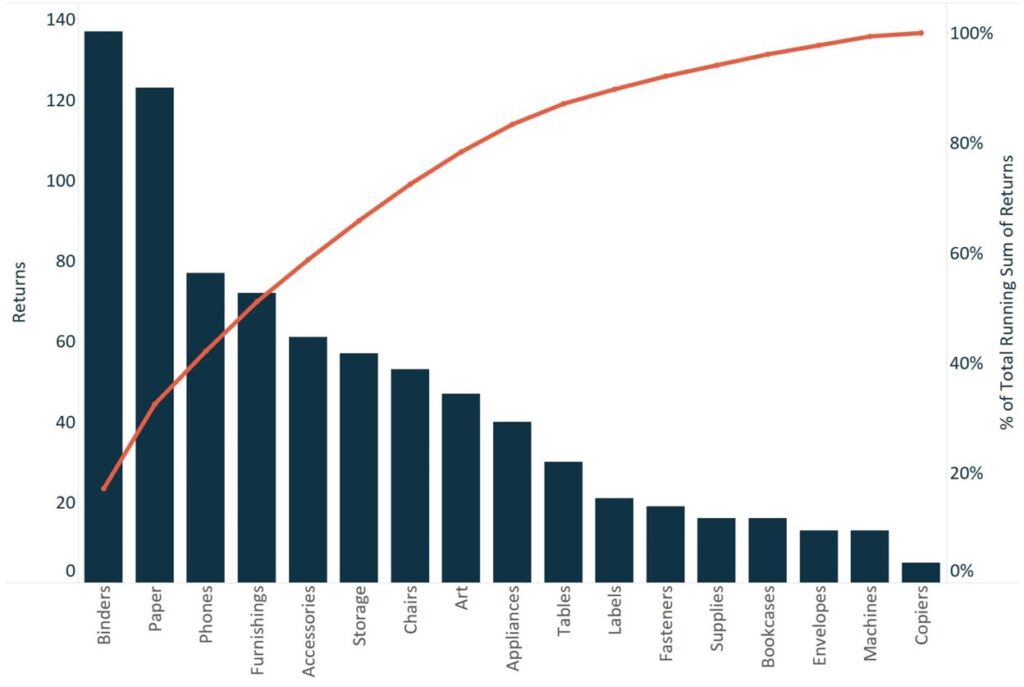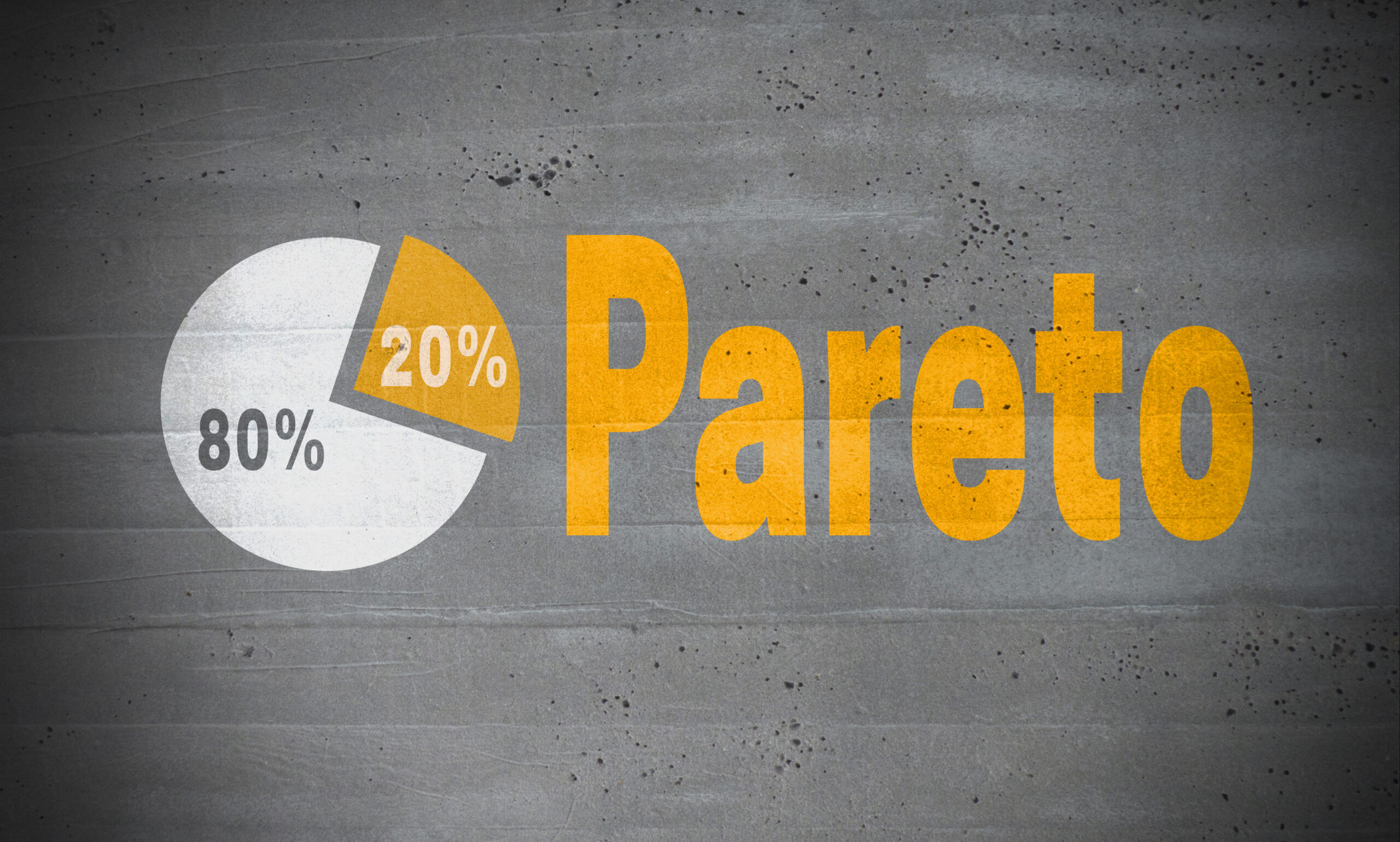“Pareto’s Principle: you generally spend 80% of your time on 20% of the project.” – Joseph M. Juran.
Vilfredo de Pareto (15 July 1848 – 19 August 1923) was an Italian sociologist and economist who determined that, in general, 80% of a nation’s income was in the hands of only 20% of the population. Today, his work is called the Pareto Principle or the 80-20 rule.
The Pareto Principle holds that 80% of a company’s productivity (revenues, retail sales, services, manufactured goods, etc.) come from just 20% of its efforts. Awareness of this principle is important for business leaders, enabling informed resource allocation, better time management, and strategic focus. Thus, when businesses concentrate their most productive assets, technology, talent and financial resources on their— highest performing employees, top-selling products or high value clients—businesses can attain increased productivity, sales and profits.
What is the Pareto Principle?
The 80-20 Rule, also known as the Pareto Principle, states that 80% of a company’s productive results come from 20% of its productive activities. For instance, around 80% of a company’s revenue often comes from just 20% of its customers. According to the principle, businesses can achieve optimal results by focusing resources on the most productive factors, such as top-performing products or valuable clients.
Remember, it’s necessary to understand that the principle doesn’t disregard the remaining 80% but emphasizes efficient prioritization for maximum impact.
Why is it Important to Understand the Pareto Principle?
Understanding the Pareto Principle allows business leaders and managers to identify the critical few productive activities, resources, personnel and clients that drive the majority of results and prioritize them. Further, the Pareto Principle aids in recognizing areas where efforts can be streamlined, leading to better decision-making, higher productivity, and reduced employee burnout.
“Strive for excellence in few things, rather than good performance in many.” – Richard Koch.
Practical Examples of the Pareto 80/20 rule:
- 80% of complaints come from 20% of customers.
- 80% of profits come from 20% of the company’s effort.
- 80% of sales come from 20% of products or services.
- 80% of sales are made by 20% of salespeople.
- 80% of clients come from 20% of marketing activities.
Applying the Pareto Principle at Twitter
After Elon Musk acquired Twitter, he quickly reduced the workforce by 50% of the employees. This action sparked concerns over the platform’s capacity to continue operating. Moreover, using the Pareto Principle, Musk kept the most productive workers (20% + 10%), resulting in over 80% of previous work done by only 30% of the staff. The Twitter case demonstrates how Musk’s application of Pareto Principle guides his business decisions. As of 07/23, the company continues to operate under the name “X”.
How to Conduct a Pareto Analysis
Actionable Steps for Conducting a Pareto Analysis (80/20 Rule Analysis):
Step 1: Identify Problems
Begin by gathering a list of issues based on feedback from stakeholders such as employees, clients, or customers. Feedback can be collected through anonymous complaint forms, customer surveys, or employee recommendations.
Step 2: Identify Causes
Dig deeper to understand the reasons behind each problem. Look for root causes that might not be immediately obvious, as addressing these can have a more significant impact.
Step 3: Score Problems
Assign scores to each problem based on their negative impact on the organization. Develop a scoring system that considers the severity and consequences of the issues being addressed.
Step 4: Group Similar Problems
Categorize and group problems that share common characteristics or causes. This step helps identify patterns and trends within the data.
Step 5: Create a Pareto Graph/Chart
Visualize the grouped data by creating a Pareto graph. This visual representation highlights the problems and their respective scores, making identifying the most critical issues easier.
Below is a basic Pareto Analysis/Chart from a Retail Stationary Stationary Company Chart that summarizes the most returned items:
 (Source: Evolytics)
(Source: Evolytics)
The data provided by the Pareto analysis allows decision makers to take a closer look at why specific products are returned so often.
Step 6: Focus on the Highest Score
Identify the group of problems with the highest cumulative score. These are the issues that warrant immediate attention due to their significant impact.
Below is a sample scoring system taken from a private family medical clinic evaluating client service quality (Source: Juran) :
(Source: Juran)
Step 7: Develop Solutions
Brainstorm and implement targeted solutions for the prioritized problem group. Look for strategies that address root causes and have the potential for substantial positive outcomes.
Step 8: Monitor and Evaluate
Implement the selected solutions and closely monitor their effectiveness over time. Regularly assess whether the expected improvements are being realized and adjust strategies if necessary.
Remember, while the Pareto Principle offers valuable insights, it’s a rule of thumb rather than an absolute law. Using it alongside other analytical methods ensures a well-rounded decision-making process.
Note: The main disadvantage of Pareto analysis is that it does not provide solutions to issues; it is only helpful for determining or identifying the root causes of a problem(s).
When Should Leaders and Managers Use Pareto Analysis?
The 80-20 rule is helpful to managers when pinpointing a business’s most pressing concerns, enhancing problem-solving skills, improving decision-making, and managing time and change. Companies can use a Pareto analysis to streamline marketing efforts, address quality issues, optimize processes, and re-focus on key operations that add value to business activities.
“Focus on signal over noise. Don’t waste time on stuff that doesn’t actually make things better.” – Elon Musk.
The Pareto Principles is useful for business leaders to understand and use to maximize their company’s most productive activities. By applying the 80/20 rule, businesses can allocate scarce resources and prioritize activities that will lead to optimal success. In sum, the Pareto Principle when used as a decision template can give business leaders the focus needed to accomplish their goals in today’s competitive business environment.
Thank you for reading our article! TimeWellScheduled is a secure online time and attendance software 100% tailored to meet your employee scheduling needs! In addition, our cloud-based solution facilitates attendance tracking and payroll processing and enhances workforce management capabilities. Plus, our service is free for up to 10 employees.






